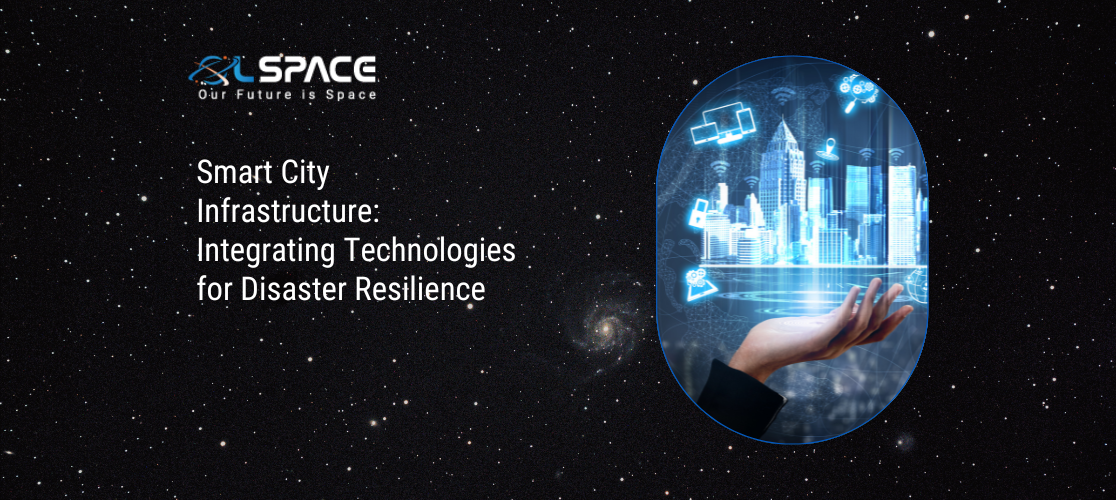02 February 2024
Smart City Infrastructure: Integrating Technologies for Disaster Resilience

Smart city infrastructure is revolutionising urban development by leveraging advanced technologies to enhance efficiency, sustainability, and overall quality of life. In the face of increasing natural disasters and urban challenges, integrating these technologies becomes crucial for building disaster-resilient smart cities. This article explores how smart city infrastructure can be designed and equipped with cutting-edge technologies to ensure resilience in the face of disasters.
1. Early Warning Systems:
Sensor Networks: Implement a network of sensors for real-time monitoring of environmental conditions. These sensors can detect early signs of disasters such as earthquakes, floods, or extreme weather events, triggering immediate alerts and evacuation procedures.
2. Geospatial Technologies:
GIS (Geographic Information System): Utilise GIS for mapping and analysing geographic data, aiding in disaster risk assessment and response planning. GIS enables city planners to identify vulnerable areas and plan infrastructure developments accordingly.
3. IoT (Internet of Things) Devices:
Connected Infrastructure: Deploy IoT devices on critical infrastructure components such as bridges, buildings, and utility networks. These devices can monitor structural health, detect anomalies, and provide valuable data for predictive maintenance.
4. AI (Artificial Intelligence) for Predictive Analytics:
Machine Learning Algorithms: Leverage AI and machine learning algorithms to analyse historical data and predict potential disaster scenarios. This enables authorities to proactively implement preventive measures and allocate resources efficiently.
5. Resilient Energy Systems:
Renewable Energy Integration: Smart cities should prioritise renewable energy sources, making the energy grid more resilient during disasters. Incorporating solar panels, wind turbines, and energy storage systems ensures a continuous and reliable power supply.
6. Communication Infrastructure:
Redundant Communication Networks: Establish redundant communication systems, including robust internet connectivity, satellite communication, and mesh networks. This ensures uninterrupted communication channels during disasters when traditional networks may be compromised.
7. Smart Transportation Systems:
Intelligent Traffic Management: Implement smart traffic systems with real-time data analysis to optimise traffic flow during evacuation procedures. This includes dynamic rerouting, traffic signal prioritisation, and integration with public transportation.
8. Robotic and Drone Technology:
Search and Rescue Operations: Employ robotic systems and drones for efficient search and rescue operations in disaster-stricken areas. These technologies provide real-time situational awareness and assist emergency responders in identifying and helping victims.
9. Smart Building Design:
Seismic-Resistant Structures: Design buildings with advanced engineering techniques to withstand seismic activity. Smart building technologies can include earthquake early warning systems, automated evacuation routes, and structural health monitoring.
10. Cloud Computing for Data Storage:
Data Backup and Recovery: Utilise cloud computing for secure and scalable data storage. This ensures that critical data related to disaster management, emergency response plans, and citisen information is backed up and easily recoverable.
11. Citisen Engagement Platforms:
Community Outreach Apps: Develop mobile applications and platforms to engage citisens in disaster preparedness and response. These apps can provide real-time alerts, evacuation routes, and communication tools for residents during emergencies.
12. Autonomous Systems for Emergency Response:
Autonomous Vehicles: Integrate autonomous vehicles for emergency response, ensuring swift and safe transportation of supplies and personnel. These vehicles can navigate disaster-stricken areas without human intervention.
Conclusion
Integrating advanced technologies into smart city infrastructure is pivotal for building disaster-resilient urban environments. By combining early warning systems, geospatial technologies, IoT devices, AI analytics, and other innovative solutions, smart cities can enhance their preparedness and responsiveness to natural disasters. The ultimate goal is to create urban spaces that can withstand and recover swiftly from adversities, ensuring the safety and well-being of residents in the face of unforeseen challenges.
